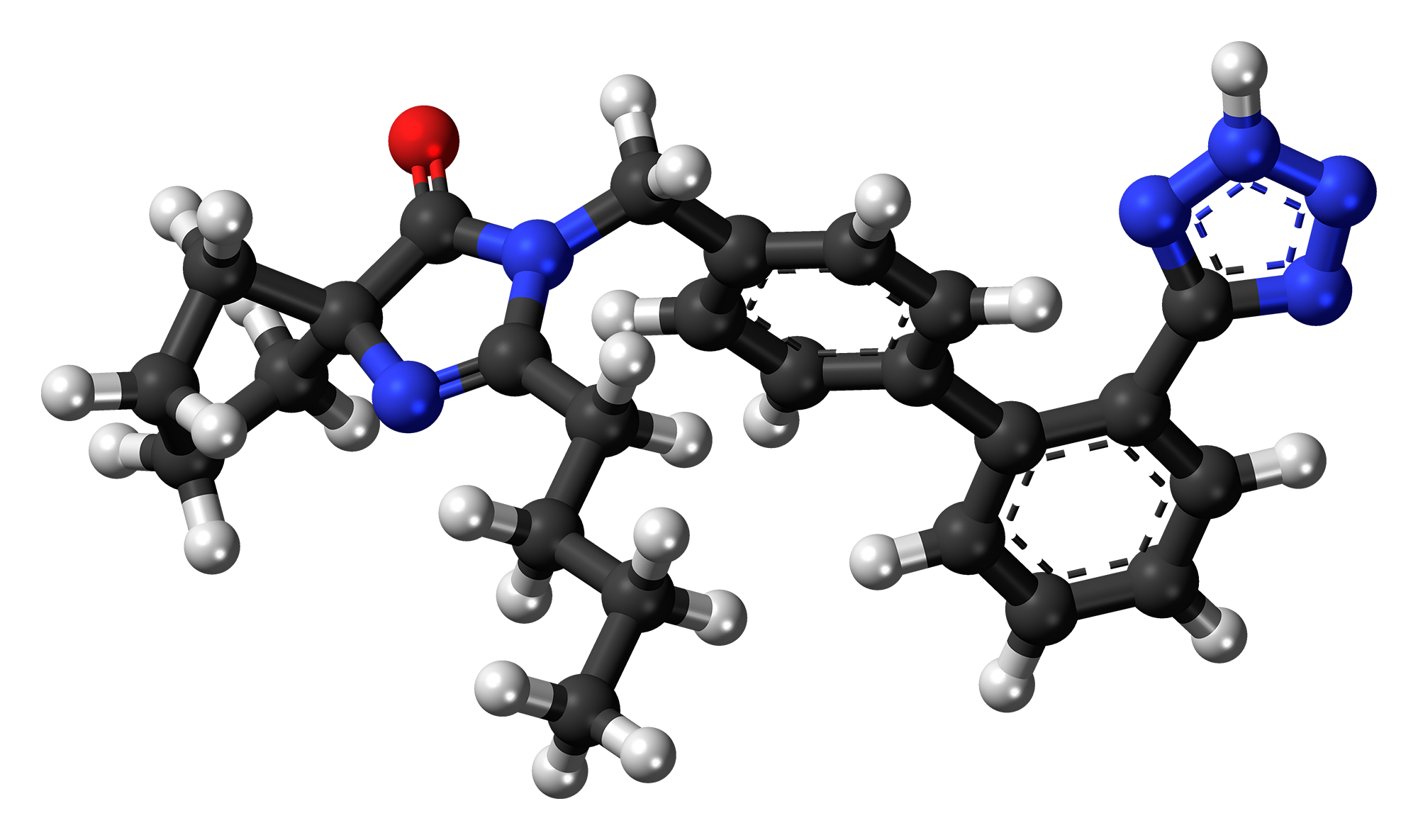Irbesartan
- I. Introduction
- II. Composition of Irbesartan
- III. Uses of Irbesartan
- IV. Off-label Use of Irbesartan
- V. How Irbesartan Works
- VI. Dosage and Administration of Irbesartan
- VII. Side Effects of Irbesartan
- VIII. Interactions with Irbesartan
- IX. Warnings and Contraindications of Irbesartan
- X. Careful Administration of Irbesartan
- XI. Important Precautions when Using Irbesartan
- XII. Administration to Special Populations
- XIII. Overdosage of Irbesartan
- XIV. Storage and Handling Precactions of Irbesartan
I. Introduction
A. Brief History of Irbesartan
The tale of Irbesartan's entrance into medicinal history began in the early 1990s. Sanofi, previously recognized as Sanofi Winthrop, brought it to the market as Avapro. From that point forward, it has established itself as a formidable contender in combatting hypertension and kidney ailments linked to diabetes within the pharmaceutical industry.
B. Classification and Type of Drug
Irbesartan is classified as an angiotensin II receptor antagonist, commonly called ARBs. These medications are instrumental in regulating the function of the hormone angiotensin II, which constricts blood vessels. Due to this characteristic, Irbesartan is a beneficial treatment option for managing hypertension and safeguarding cardiovascular health.
C. Overall Purpose and Role in Medical Field
As an ARB, Irbesartan plays a crucial role in the medical field by serving two purposes. Its primary function is effectively managing hypertension, a widely prevalent issue affecting a significant portion of adults worldwide by widening blood vessels. It promotes the smooth flow of blood and effectively lowers high blood pressure. It has also demonstrated remarkable effectiveness in treating kidney damage in individuals with type 2 diabetes, also known as diabetic nephropathy. Irbesartan has genuinely revolutionized and broadened the therapeutic options available for these conditions.
II. Composition of Irbesartan

A. Chemical Structure and Properties
The distinctive chemical structure of Irbesartan encapsulates its molecular essence. Unlike peptide-based drugs, it is a nonpeptide molecule rendering it smaller and less intricate. Its empirical formula is C25H28N6O classifying it as a tetrazole derivative. With a molecular weight of 428.5 g/mol. The compound cannot dissolve in water but readily in organic solvents. This solubility property aids in effective absorption within the body when taken orally.
B. Active and Inactive Ingredients
To achieve its therapeutic effect, Irbesartan relies on its active ingredient. Commonly available in tablet form with various strengths: 75 mg.,150mg., and .300mg. Additional compounds coined "inactive ingredients" are also present alongside this medication's active component within these tablets' formulations. Though they don't possess any therapeutic effects themselves Rather act, no therapeutic value is associated with them., They perform the function of carrying or binding agents Instead, aiding in the overall structure of the medication. Such inactive ingredients include microcrystalline cellulose, lactose, pregelatinized starch, croscarmellose sodium, poloxamer 188, silicon dioxide, and magnesium stearate. Specific individuals may be sensitive to these inactive substances it is always advisable to carefully consult the manufacturer's labeling for a complete list of ingredients.
III. Uses of Irbesartan
A. Approved Therapeutic Uses
Irbesartan is a medication of significant potency that the FDA has approved for various uses. Its primary purpose is to manage primary hypertension effectively. Additionally, it offers a therapeutic solution for individuals with type 2 diabetes mellitus who suffer from nephropathy by reducing proteinuria and granting protection to the kidneys123.
Here are some references that you can check for more information about Irbesartan:
B. Benefits for Hypertension Patients
Irbesartan decreases blood pressure by dilating blood vessels, reducing the pressure on arterial walls. This helps to mitigate the risk of cardiovascular incidents. Additionally, Irbesartan also improves cardiovascular health by lowering blood pressure and reducing strain on the heart. This fosters overall well-being for the cardiovascular system. Moreover, Irbesartan's once-daily dosing regimen promotes superior patient compliance and ensures consistent blood pressure control123.
Here are some references that you can check for more information about Irbesartan:
C. Role in Treating Diabetic Nephropathy
Irbesartan is a valuable ally for those with type 2 diabetes as it protects the kidneys. Diabetic nephropathy, a result of poorly managed diabetes over a long period, can cause severe harm to the kidneys. Thankfully, Irbesartan works by decreasing proteinuria, an indicator of kidney damage. This action effectively slows down the advancement of the disease and delays the requirement for dialysis or transplantation.
Here are some references that you can check for more information about Irbesartan:
IV. Off-label Use of Irbesartan
A. Potential Applications in Heart Failure Management
Increasing evidence has recently indicated that Irbesartan, due to its distinctive pharmacological properties, might offer advantageous effects for individuals suffering from heart failure. Through its capability to hinder the harmful actions of angiotensin II, this medication could potentially enhance cardiac function and ultimately improve outcomes for these patients.
Here are some references that you can check for more information about Irbesartan:
B. Exploring Uses in Stroke Prevention
The potential of Irbesartan in preventing cerebrovascular incidents like stroke lies in its blood pressure-lowering effects. However, it is crucial to acknowledge that this specific application is still under investigation and has not yet been formally endorsed.
Here are some references that you can check for more information about Irbesartan:
C. Possible Impacts
There are two potential impacts associated with the off-label use of Irbesartan. Firstly, it has the potential to offer new therapeutic options for conditions that currently do not have efficient treatments available. However, it is essential to consider that this off-label use may also bring about unforeseen risks because of the absence of thorough testing in these conditions.
Here are some references that you can check for more information about Irbesartan:
D. Ongoing Research in Kidney Disease Treatment
Ongoing research is currently looking into the potential benefits of Irbesartan in treating various forms of chronic kidney disease, not just diabetic nephropathy. While the initial findings have shown promise, conducting more thorough clinical trials before making a universal recommendation is essential.
Here are some references that you can check for more information about Irbesartan:
E. Note on Off-label Use: Considerations and Legal Aspects
It is important for physicians to exercise caution and be well-informed when it comes to the off-label use of medications like Irbesartan. Those who prescribe it off-label carry the responsibility of carefully assessing whether the benefits outweigh the risks. It is also crucial for them to communicate this information to patients highlighting that such use lacks official approval. Moreover, since liability usually falls on the prescriber in cases of off-label prescribing, legal aspects should be considered as well.
Here are some references that you can check for more information about Irbesartan:
V. How Irbesartan Works
A. Mechanism of Action in Hypertension
Dependent on its specific mechanism of action, Irbesartan plays a crucial role in managing hypertension successfully1. Acting as an antagonist against the angiotensin II receptor, this medication selectively hinders the vasoconstrictive and aldosterone-secreting effects instigated by angiotensin II1. This consequential impact ultimately results in diminished blood pressure levels2.
References:
- National Center for Biotechnology Information - Management of hypertension in patients with chronic kidney disease
- National Center for Biotechnology Information - Renin-angiotensin-aldosterone system inhibitors in hypertension: is there evidence for benefit independent of blood pressure reduction?
B. Impact on Renin-Angiotensin System
The renin-angiotensin system (RAS) is an essential regulator of blood pressure and fluid balance1. Irbesartan, by inhibiting the activity of angiotensin II triggers a series of physiological responses within the RAS2. These include a decrease in vasoconstriction, a reduction in the secretion of aldosterone (a hormone responsible for sodium and water retention) and a decrease in the release of another vasoconstrictive hormone called vasopressin2. These combined effects of Irbesartan help to keep blood pressure at healthy levels3.
References:
- National Center for Biotechnology Information - The Renin-Angiotensin-Aldosterone System: Pathophysiological Role and Pharmacologic Inhibition
- National Center for Biotechnology Information - The role of angiotensin II in glomerular volume dynamics and podocyte calcium handling
- National Center for Biotechnology Information - Renin-angiotensin-aldosterone system inhibitors in hypertension: is there evidence for benefit independent of blood pressure reduction?
C. Effects on Kidney Function in Diabetic Nephropathy
In relation to diabetic nephropathy, Irbesartan has proven itself as an agent that safeguards our kidneys from harm1. It achieves this by lowering intraglomerular pressure – an essential aspect leading to kidney damage2. The dilation of efferent arterioles within our glomeruli (those responsible for filtering our blood) is facilitated by Irbesartan's actions2. As a result, proteinuria decreases, and the progression of kidney disease is held at bay2.
References:
- The New England Journal of Medicine - Renoprotective Effect of the Angiotensin-Receptor Antagonist Irbesartan in Patients with Nephropathy Due to Type 2 Diabetes
- National Center for Biotechnology Information - Role of Angiotensin II in Intrarenal Hemodynamics: Effects of Experimental Angiotensin II-Induced Hypertension
VI. Dosage and Administration of Irbesartan
A. Standard Dosage Guidelines for Adults
It is generally recommended for individuals diagnosed with hypertension to begin treatment with a daily dose of 150 mg of Irbesartan. The healthcare provider may consider increasing the dosage to 300 mg daily depending on the patient's blood pressure response. In cases where diabetic nephropathy is present, a daily dose of 300 mg is advised.
B. Titration and Adjustment Protocols
When titrating the dose of Irbesartan, a healthcare professional must closely monitor the process. Typically. Increases in dosage are assessed after 1-2 weeks of treatment and are based on how the patient's blood pressure responds. If control is not sufficient, additional antihypertensive agents may be considered.
C. Important Notes on Administration Timing and Food Interactions
Irbesartan should ideally be taken daily around the same time for consistency in maintaining blood levels, whether with or without food. Importantly, no concerning food interactions have been identified; however, consulting a healthcare provider regarding dietary habits before commencing new medication is always prudent.
VII. Side Effects of Irbesartan
A. Common Side Effects: Incidence and Management
Like all medications on the market today. Irbesartan does carry a risk of causing side effects. The most frequently encountered ones include dizziness, fatigue, and diarrhea. Fortunately for most individuals using this drug regimen, such adverse effects are often short-lived and gradually diminish as their bodies adjust accordingly with that being said though. It would still be wise for anyone experiencing persistent or worsening symptoms. Consult with a qualified healthcare professional who can offer further guidance on managing them effectively.
B. Less Common and Rare Side Effects
Less common side effects such as heartburn or indigestion, joint pain or swelling, and changes in urinary frequency do not typically require stopping the medication. However. It is important to report these symptoms to a healthcare provider.
C. Long-term Side Effects and Monitoring
Long-term usage of Irbesartan is typically well tolerated. However, it may result in minor elevated serum potassium levels, which calls for regular monitoring. In rare instances. It can impact kidney function. It necessitates periodic tests to assess kidney functionality. It is imperative to consistently follow the monitoring schedule provided by your healthcare provider when undergoing prolonged medication.
VIII. Interactions with Irbesartan

A. Drug-Drug Interactions: Risks and Considerations
Irbesartan has the potential to interact with various medications, which can alter their effects or intensify possible side effects. For example, it can result in hyperkalemia if used concurrently with other drugs that raise potassium levels (such as potassium-sparing diuretics or supplements). Moreover, the antihypertensive effect of Irbesartan may be diminished, and the risk of renal impairment increases when used along with nonsteroidal anti-inflammatory drugs (NSAIDs). Therefore it is crucial to discuss with your healthcare provider all medications you are taking, including over-the-counter drugs and supplements.
B. Food and Lifestyle Interactions
It is recommended to avoid excessive consumption of alcohol while taking Irbesartan as this can potentially enhance the drug's blood pressure-lowering effect and increase the risk of dizziness or fainting. To promote good health and support the antihypertensive effect of Irbesartan, it is advisable to maintain a balanced diet, exercise regularly, and refrain from smoking.
C. Interaction Monitoring and Patient Communication
The healthcare provider and the patient should jointly undertake the task of monitoring drug interactions. Ensuring regular checkups and fostering open communication about new medications or substantial changes in diet or lifestyle habits is significant in averting any detrimental associations.
IX. Warnings and Contraindications of Irbesartan
A. General Warnings for Use
Individuals with renal artery stenosis or severe renal impairment are advised to use Irbesartan cautiously. It should not be commenced in patients with elevated potassium levels or those undergoing dialysis. Individuals who previously suffered from angioedema (swelling under the skin) with other angiotensin receptor blockers should also approach its usage cautiously.
B. Known Contraindications
Irbesartan should not be used by patients who have a hypersensitivity to any of the components in this product. Additionally, it is contraindicated during pregnancy because of the potential harm it may cause to the fetus. Therefore women of childbearing must ensure they use effective contraception while undergoing treatment.
C. Special Situations: Surgery, Diagnostics and Allergies
Suppose a person has a scheduled surgery or undergoes specific diagnostic procedures involving contrast media. In that case, temporarily discontinuing using Irbesartan might be necessary due to the potential risk of acute renal failure. It is also essential for individuals with a previous allergy to drugs derived from sulfonamide to exercise caution as there is a possibility of cross-reactivity.
X. Careful Administration of Irbesartan
A. Overview of Patient Risk Factors
Several risk factors may require adjustment of the Irbesartan regimen. These risk factors include age, liver or kidney disease, concurrent medications, and comorbid conditions such as heart failure. It is essential to consider these factors when determining the appropriate dosing and monitoring plan for patients taking Irbesartan.
B. Special Considerations for Patients with Renal or Liver Disease
For patients who have severe renal impairment or liver disease, it may be necessary to administer a lower initial dose and closely monitor their kidney function and liver enzymes. If there are any significant changes observed, it may be necessary to adjust the dosage or consider discontinuing the therapy.
C. Role of Ongoing Patient Monitoring in Safe Administration
The safety measures for administering Irbesartan heavily rely on thorough patient monitoring at all times. Consistent check-ups are vital in promptly identifying and addressing possible side effects or interactions while adapting the therapeutic plan. Additionally, these appointments serve as a platform for reinforcing patient knowledge about proper medication adherence techniques, implementing lifestyle changes effectively, and recognizing symptoms when they occur.
XI. Important Precautions when Using Irbesartan
A. Patient Counseling Points
Patients prescribed Irbesartan should be given counseling on the significance of adhering to their prescribed therapy and maintaining regular follow-up appointments. They need to be informed about the possible side effects, how to manage them effectively, and when it is appropriate to seek immediate medical attention. Furthermore, patients should be made aware of the potential risks associated with drug interactions and the importance of informing healthcare providers about any other medications they may be taking.
B. Management of Missed Doses and Overdose Situations
Suppose a patient forgets to take a dose, it is important for them to take it as soon as they remember. Unless it is nearly time for their next dose. Taking two doses simultaneously to compensate for the missed one is not recommended in the event of an overdose. Immediate medical attention should be sought. Overdosing can lead to symptoms like dizziness or fainting caused by a significant decrease in blood pressure.
C. Awareness of Symptom Escalation and Emergency Protocols
Patients should be notified about symptoms that may suggest serious side effects, such as angioedema. This condition is marked by swelling of the face, lips, tongue, or throat. Individuals must realize that in such instances, prompt emergency care should be sought without delay. Additionally, patients should be educated about symptoms like irregular heartbeat, persistent nausea, or notable fluctuations in urine output, which might point to potential kidney complications.
XII. Administration to Special Populations
A. Elderly Patients: Dosage Adjustments and Monitoring
It is recommended to exercise caution when initiating Irbesartan treatment in elderly individuals as they face a higher risk of orthostatic hypotension. It is crucial to regularly monitor kidney function and electrolyte balance in this population as they are more likely to have pre-existing kidney impairment that could potentially worsen.
B. Pregnant Women and Nursing Mothers: Risks and Recommendations
Irbesartan is classified as a Pregnancy Category D drug, which signifies its potential to harm the developing fetus. Hence, It is strongly advised to avoid its use during pregnancy or in women who intend to conceive as soon as pregnancy is detected. Prompt discontinuation of Irbesartan is recommended. Regarding nursing mothers, caution should be exercised since there is insufficient knowledge regarding the excretion of Irbesartan in human milk.
C. Pediatric Use: Safety, Efficacy, and Dosage Guidelines
The use of Irbesartan has been authorized to address hypertension in children aged six years and older. However, Caution should be exercised as this medication must only be administered under the supervision of an experienced pediatrician. The dosage prescribed ought to consider each patient's unique weight characteristics. Moreover, meticulous observation regarding growth and development becomes indispensable during long-term treatment.
XIII. Overdosage of Irbesartan
A. Identifying Symptoms of Overdosage
If an individual takes too much Irbesartan, they may experience low blood pressure, dizziness, and a rapid or irregular heartbeat. In rare cases of a substantial overdose, more severe signs like changes in consciousness can occur. Patients must be knowledgeable about these symptoms and promptly seek medical assistance if they suspect an overdose.
B. Immediate First Aid and Medical Care Procedures
In case any indications suggest an overdose. Patients must take immediate action and seek medical attention with urgency and priority. To adequately handle such a scenario at its outset. Prompt measures must be taken to evacuate the stomach's contents by employing methods such as inducing vomiting or performing gastric lavage procedures. Subsequent treatment endeavors should offer supportive measures, including monitoring vital signs and carefully watching the patient's clinical status.
C. Prevention Strategies and Education
Preventing overdose hinges on two key factors: patient education and medication management strategies. Patients must be advised about the criticality of adhering to prescribed medication instructions and seeking medical advice before adjusting their dosage. Equally important is raising awareness about safe storage practices, especially when keeping medications out of children's reach.
XIV. Storage and Handling Precactions of Irbesartan
A. Recommended Storage Conditions
To ensure the stability and efficacy of Irbesartan, it is recommended that this medication be stored in an area with a moderate room temperature. To shield it from potential damage. It should be kept away from direct sunlight and excessive moisture. It is strongly advised not to store it in the bathroom or near a sink as these areas can create damp conditions that might compromise its quality. Additionally, it is essential to prevent exposure to extreme temperatures, such as freezing or high-heat environments, as this could negatively impact the medication's effectiveness.
B. Precautions in Handling and Dispensing
Preserving best practices for patient well-being entails administering Irbesartan tablets in their original container alongside the pertinent patient information leaflet. Additionally, healthcare providers should emphasize the significance of handwashing before and post handling these tablets. It is similarly crucial for patients to remain cautious and avoid contact between their hands and their eyes, nose, or mouth after medication administration.
C. Disposal Guidelines and Safety Measures
The responsible management of medication extends beyond its period of use. Hence, any remaining or expired Irbesartan tablets mustn't be carelessly disposed of in wastewater or household waste. By returning unused medication to a pharmacy for appropriate disposal, patients contribute positively towards environmental preservation while reducing the likelihood of accidental exposure or misuse.

































